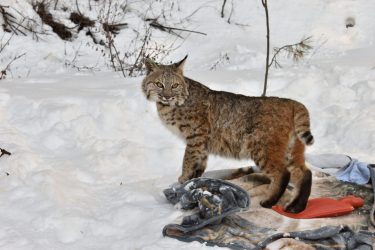
Since their protection under the Endangered Species Act, wolf populations have been making a comeback in the continental United States. Conservationists have argued that the presence of wolves and other apex predators, so named because they have no known predators aside from people, can help keep smaller predator species in check.
New research shows that in Washington state, the presence of two apex predators — wolves and cougars — does indeed help keep populations of two smaller predators in check. But by and large the apex predators were not killing and eating the smaller predators, known as mesopredators. Instead, they drove the two mesopredator species — bobcats and coyotes — into areas with higher levels of human activity. And people were finishing the job.
The study — published May 18 in the journal Science by researchers at the University of Washington, the Washington Department of Fish and Wildlife and the Spokane Tribe of Indians — reports that bobcats and coyotes were more than three times as likely to die from human activity, like hunting or trapping, than from the claws and jaws of cougars and wolves.
The findings illustrate how humankind’s growing footprint is changing interactions among other species.
Read more at UW News »
